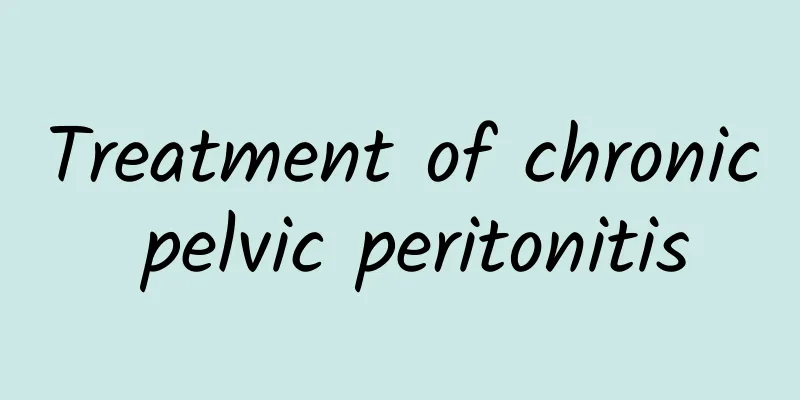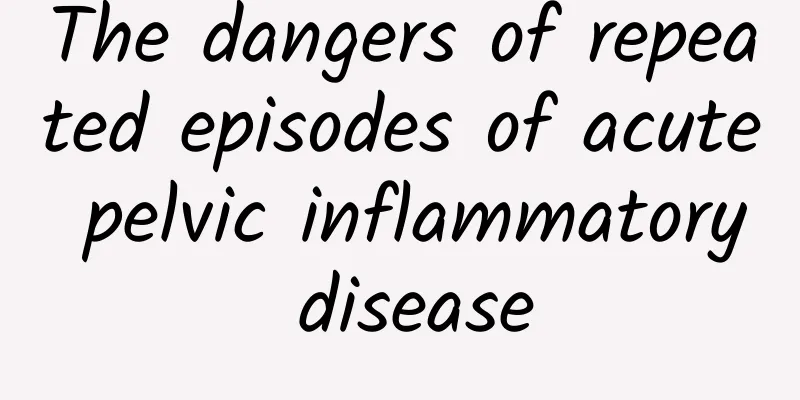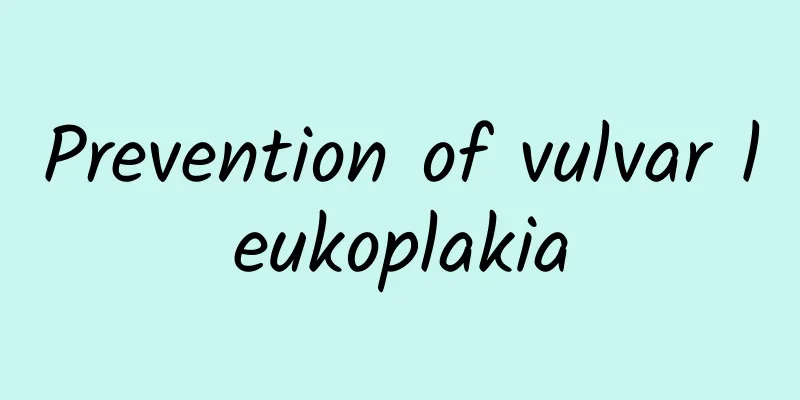Treatment of chronic pelvic peritonitis

|
Pelvic peritonitis is a common and serious surgical disease caused by bacterial infection, chemical stimulation or injury. Its main clinical manifestations are abdominal pain, abdominal muscle tension, nausea, vomiting, fever, and in severe cases, it can cause a drop in blood pressure and systemic toxic reactions. Generally, this disease needs to be treated with the following methods. 1. Body position When there is no shock, the patient should take a semi-recumbent position, which is conducive to the accumulation of exudate in the abdomen in the pelvic cavity, because the symptoms of pelvic abscess poisoning are mild and it is also convenient for drainage. In the semi-recumbent position, the lower limbs should be moved frequently to change the pressure points to prevent venous thrombosis and bedsores. 2. Fasting Patients with gastrointestinal perforation must absolutely fast to reduce the continued leakage of gastrointestinal contents. For patients with pelvic peritonitis caused by other causes who have already developed intestinal paralysis, eating can aggravate the accumulation of fluid and gas in the intestines and worsen abdominal distension. Eating can only be started after the intestinal peristalsis returns to normal. 3. Gastrointestinal decompression It can reduce gastrointestinal distension, improve gastrointestinal wall blood circulation, and reduce the leakage of gastrointestinal contents into the abdominal cavity through the rupture. It is an indispensable treatment for patients with pelvic peritonitis. However, long-term gastrointestinal decompression hinders breathing and coughing, and increases fluid loss, which can cause hypochloremic and hypokalemic alkalosis. Therefore, once intestinal peristalsis returns to normal, the gastric tube should be removed as soon as possible. 4. Analgesia It is necessary to use sedatives and analgesics appropriately to relieve the patient's pain. For patients whose diagnosis has been confirmed and whose treatment has been decided, it is also permissible to use pethidine or morphine to stop severe pain, and it has a certain effect in strengthening the tension of the intestinal wall muscles and preventing intestinal paralysis. However, if the diagnosis has not yet been confirmed and the patient still needs to be observed, it is not appropriate to use analgesics to avoid masking the condition. |
<<: How to treat acute peritonitis
>>: How to treat chronic pelvic peritonitis
Recommend
How is bacterial vaginosis treated?
How is bacterial vaginosis treated? 1. Fungal and...
Is it better to have an abortion or a medical abortion?
Artificial abortion refers to artificial abortion...
What are the daily dietary taboos after abortion? 3 dietary taboos you should pay attention to after abortion
After an unexpected pregnancy, women who choose p...
What medicine should I take for a 2cm uterine fibroid? Can a 2cm uterine fibroid be treated with medicine?
What medicine should I take for a 2 cm uterine fi...
Will you gain weight just by drinking cold water? Press these 4 acupoints to help you lose weight quickly
"You'll gain weight even if you drink a ...
What are the clinical manifestations of cervicitis?
I don't know if you know the clinical manifes...
Can’t lose weight by eating less and exercising more? Thyroid abnormality in a 10-year-old child
Attention people who are trying to lose weight! D...
What are the symptoms of acute and chronic cervicitis?
Everyone knows that cervicitis is generally divid...
How long does it take to recover after an abortion?
Generally speaking, you can do housework and go o...
What are the prevention methods for women suffering from menopause?
Aging and menopause are inseparable, and because ...
Carrot legs, get out of here! Ankle + calf spiral massage
(Author: Lian Shui Hua Yin) Carrot legs, get out ...
Experts explain what are the symptoms of ectopic pregnancy?
Do you know the symptoms of ectopic pregnancy? Ho...
What are the diagnostic criteria for vulvar leukoplakia?
What are the diagnostic criteria for vulvar leuko...
Does menopause mean there is no water?
Menopause is a stage in the female physiological ...
Can you exercise while lying down? "Zero-position training" corrects atrophy and improves basal metabolism
Things to note for the "Zero Position Traini...









